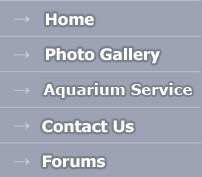


Product Search |
Products |
|||||||||||||||||||||||||||||||||||||||||||
|
Aquarium CyclingThe 3 Components & Phases ExplainedThe nitrogen cycle of an aquarium is a chain reaction in nature resulting in the birth of various types of nitrifying bacteria, each with their own job to do. Each new bacteria born consumes the previous one, and in turn gives birth to the next bacteria. The three components involved to make this happen are ammonia (NH³ or NH³+4), nitrite (NO²), and nitrate (NO³). In general the nitrogen cycling process usually takes about 30 days, but there is no exact time frame for this process to complete its task, as each aquarium is different. Factors such as how many fish, other livestock, and organic matter is present in the tank can vary the completion time, one way or the other. Testing your aquarium water during cycling is very important, as this will tell you what phase the aquarium is in at any given time throughout the process. Phase 1 - Ammonia (NH³ or NH³+4) Once ammonia begins to accumulate in the aquarium, the process begins. So where do you get the ammonia from? It is produced by such things as fish and other livestock waste, excess food, and decaying organic matter from both animals and plants. Now putting live animals into a tank for the purpose of cycling is not easy, because they are exposed to highly toxic levels of ammonia and nitrite during the process. However, without ammonia present the cycle cannot begin, and if ammonia is removed, or the supply is disrupted during cycling, the process stops. As you see the ammonia level rise during the cycling period, if you think by adding an ammonia destroyer or doing a water change to bring it down is helping, it isn't! You are only delaying the cycling process and preventing it from completing its mission. If you use fish to cycle an aquarium, it's a catch 22! You don't want to put the animals in harms way by exposing them to toxic elements, but you need their waste as the ammonia source to get the job done. The good news is there are alternatives to cycling a new tank without having to use fish, as well as ways to help speed up the nitrogen cycling process. Irregardless of what method you use to cycle a new aquarium, the process is the same. Ammonia occurs in two states depending on the water pH. NH³, the unionized state, is more toxic than NH³+4, the ionized state, because it can invade the body tissue of marine animals much easier. Almost all free ammonia in sea water with a normal pH is in the ionized state, thus less toxic. As pH rises, the less toxic ionized state decreases and the more toxic unionized state increases. For example, a toxic level of ammonia as NH³ may be present with a pH of 8.4 being lethal, but the same level of ammonia as NH³+4 with a pH of 7.8 may be tolerated. Higher tank temperatures can also effect the toxicity of ammonia. Phase 2 - Nitrite (NO²) Phase 3 - Nitrate (NO³) These bacteria are living entities that require oxygen and food (an ammonia source) to survive, grow on the surfaces of everything in the tank, and the waste from nitrobacter are shown in the form of nitrate with a test kit. When nitrate readings begin to increase, you can tell that these beneficial nitrifying bacteria are starting to establish themselves, which is what you have painstakingly been going through the cycling process to achieve. |